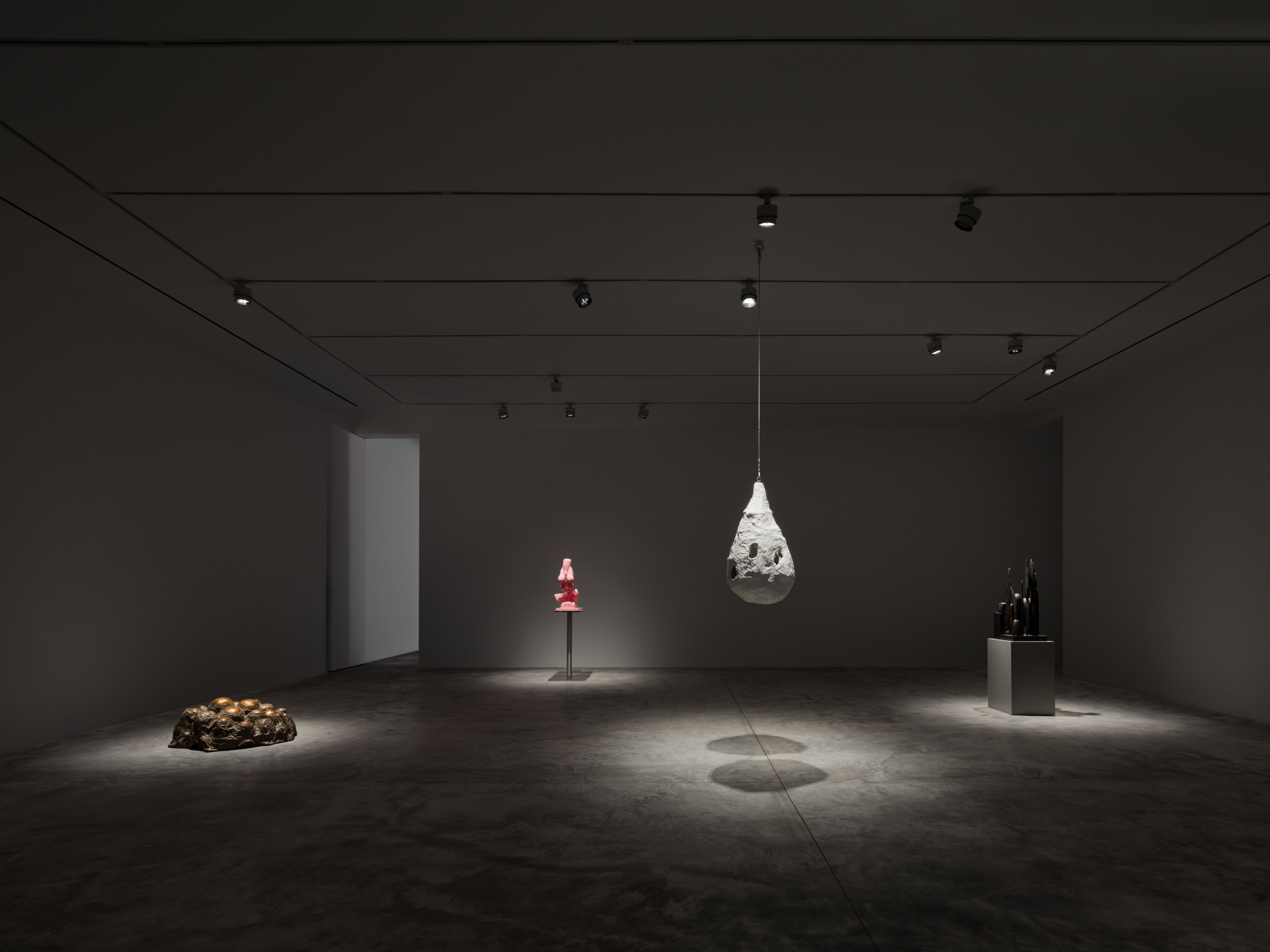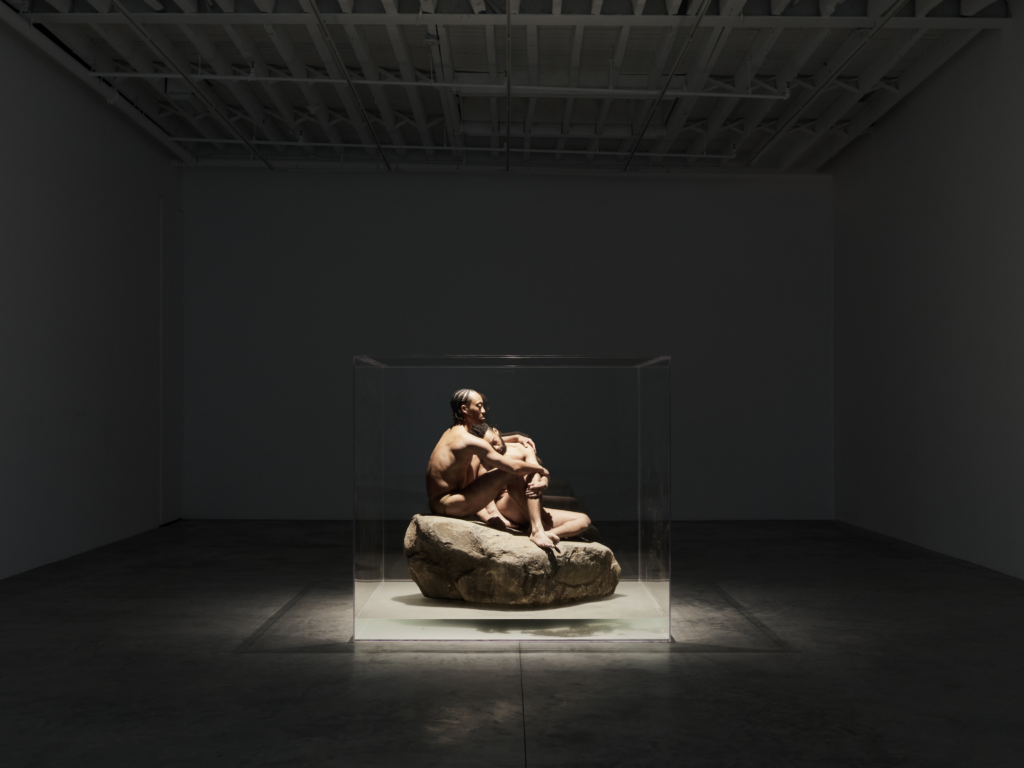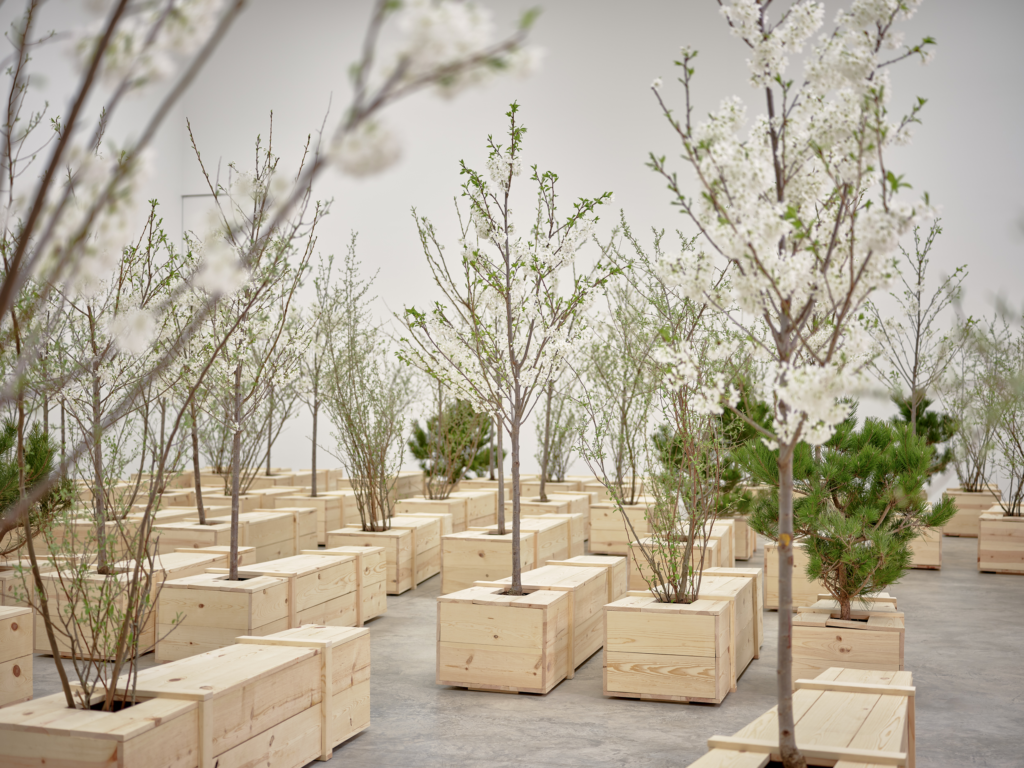A Triple Embrace with Louise Bourgeois, Miles Greenberg, and Yoko Ono


A commodious floorplan imbues the organic forms in Faurschou New York’s latest show, “Embrace the World from Within,” with a sense of harmony and potential. On entering the first of three galleries, viewers are set adrift, given ample room to wander, although their eyes alight naturally on the only work in the space: an acrylic water tank by New York-based performance artist Miles Greenberg. Most days, the tank sits vacant. Once a week, it comes alive, housing two bodies locked in a ceaseless embrace.

´The show’s organizing principle—the notion of the embrace—is derived from the practices of its three participating artists, Miles Greenberg (b. 1997), Yoko Ono (b. 1933), and Louise Bourgeois (1911–2010), and draws out from them a perceptive and universal commonality: the merging of forms to create metaphorical shelter. Featuring nine works that share sculptural qualities “Embrace the World from Within” functions less as a group show than as three distinct solo presentations speaking to one another through the walls of the former taxi depot, now Danish collector Jens Faurschou’s Greenpoint showroom.
The first gallery’s sole occupant is Greenberg’s “The Embrace” (2020). On Saturday afternoons, inside the cubic tank and visible from all sides, two performers intertwine into fleshy statuary. During my visit, on a Friday, video documentation of the previous weekend’s live performance was projected on a wall. The performers on the wall were larger than life-size, like phantasms who’d escaped the containment of the acrylic cube. This alternative presentation allowed me to study the material traces of the performance, such as the acrylic container itself and the stillness of the pool of saltwater at the base of the large stone on which the previous performers had perched.

An embrace implies stillness—a frozen moment in which shelter is configured. An embrace can also be interpreted as a form of containment, an idea explored in the exhibition’s second gallery, dedicated to conceptual artist Yoko Ono. Here, Ono’s eco-installation “Ex It” (1997/2015) draws viewers under the slow spell of nature. Hypnotic birdsong emanates from an unseen source as visitors wander past 100 wooden crates arranged in orchard-like rows. Each crate is a planter from which a living tree sprouts, flowering and shedding its leaves on the gallery floor.
Ono’s crates are made to resemble disaster relief caskets—lightweight boxes used to transport human remains in the aftermath of disasters. Although this work was conceived before the COVID-19 pandemic, the shape of the crates calls to mind recent history, when physical contact between individuals was suspended and containment became a form of care. Like Greenberg’s spectral performers, Ono’s trees spring from their containers and fill the gallery with their presence. A smattering of fallen leaves, errant puddles, and stray pinecones on the crates and floor serve as reminders of nature’s unruliness, its resistance to silos and separation.

Next to “Ex It” is a second work by Ono, a meditation on transience and traces titled “We’re All Water” (2006/2015). This work is composed of 118 palm-sized jars of water arranged side by side on a long white shelf. The jars are filled with water and labeled with names like Simone de Beauvoir (rendered in Chinese characters as 西蒙·德·波伏娃), Samuel Beckett (塞缪尔·贝克特), and Ono’s own (小野洋子). This assembly of characters argues visually what Ono sets out to express in her poem “Water Talk” (1967), which is printed on the wall next to the installation. A line from the poem reads: “We’re all water in different containers.” We’re all made from the same substance, and we’ll all eventually evaporate.

“Embrace the World from Within” certainly emphasizes harmony and conviviality, but Ono’s poem also acknowledges the persistence of difference. The second strophe reads, “even after the water’s gone / we’ll probably point out to the containers / and say, ‘that’s me there, that one.’ / we’re container minders.” The last word, “minders,” suggests a vocation of care and maintenance directed toward our gendered, raced, and classed bodies—in solidarity and across difference.
Faurschou’s third gallery houses six bronze and rubber effigies by the sculptor Louise Bourgeois, who is known for works that plumb the depths of domestic trauma, often by featuring large steel cages. At Faurschou, the tension in her sculptures, such as the tear-shaped “Fée Couturière (Fairy Seamstress)” (1963), which hangs like a cavernous white chrysalis from the ceiling, can be found not only in its weight and suspension but also in its amorphousness. The sculpture’s title references the tailor bird, which builds its nest using found objects. Just as memories, salvaged and reexamined over time, are often irregular and unclassifiable, and at once private and public, “Fée Couturière” and Bourgeois’s other sculptures on display confound conventional notions of interiority and exteriority. The pitted surface of the work alludes to a roughness of touch, reminding us not all forms of tactile embrace are utopic and frictionless.
Despite differences in intent and subjectivity, “Embrace the World from Within” is built on confluences of artistic sensibility and leakages of affect. In the works of Greenberg, Ono, and Bourgeois, the language of containment serves as a starting point and not as a constraint. In this way, Faurschou’s exhibition actively and continually refigures its notions of intimacy, sanctuary, and coexistence. To hold something from inside it seems at first like a feat of contortion, if not an impossible task. However, this introspective show plants a kernel of wild hope that we might, even from within our “different containers,” recognize our commonalities before we evaporate.
Embrace the World from Within is on view at Faurschou New York in Brooklyn, NY from April 1 through September 17, 2023. Email foundation@faurschou.com or visit Faurschou’s website for the performance schedule.
You Might Also Like
What's Your Reaction?
Jenny Wu is a writer and independent curator. Her work has appeared in Art in America, BOMB, The New York Times Magazine, and elsewhere.

